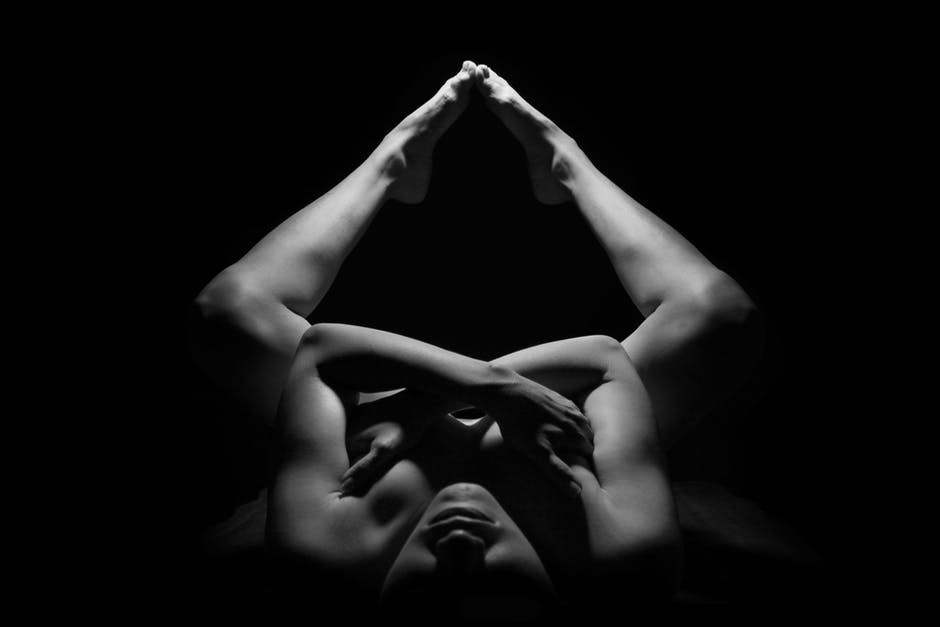Is restorative yoga a real form of yoga? Yes. Just because this form of yoga doesn’t make you sweat puddles doesn’t mean it’s not real. In fact, practicing restorative yoga can actually make you better at practicing more strenuous forms of yoga like ashtanga, vinyasa, or bikram. Through poses that open up the body while also allowing it to relax (sometimes with the help of props), restorative yoga provides healing and meditation in a way that all other types of yoga cannot. This is also why it’s the perfect type of yoga for both bedtime as well as for the first couple minutes of being awake in bed.
Start With the Seated Lotus
In restorative yoga, there are no strict rules about which pose to start your practice with. Any of the poses on this list are good starting poses. With that being said, the seated lotus is one of the most mentally neutral poses; starting with the seated lotus is a really good way to center yourself, focus on proper breathing, and shake off the couple minutes of fatigue that come with waking up. Take this time to gather your thoughts and become fully aware of your body. Do this for as long as you like.
Legs-Up-the-Wall to Relieve Tired Legs and Feet
This position is pretty self-explanatory. Scooch over to the part of your bed (or bedroom floor) that’s touching the wall and lie down with your legs up the wall. You can use a pillow or rolled up blankets to support parts of your back if necessary. You can experiment with both the angle at which your feet are propped up on the wall as well as the placement of supports on your back and neck; find a position that feels most comfortable. This is a really great way to relieve stress on the lower parts of your body. It’s an especially comfortable position for people who run regularly. You can stay in this pose for 5 to 15 minutes.
The Child’s Pose Stretches Ankles, Thighs, and Hips
Kneel with your big toes together. Put your arms on the floor or the bed for balance. Gently sit on your feet while separating your knees as wide as your hips. Lower your head on the bed/floor with your arms extended above your head, palms down. You can also lower your arms beside your torso. Either is fine; you can even do both, one after the other. Let your torso gently nest on your thighs. If this position feels difficult, you can stay in it for just 30 seconds. You can also try doing it for up to 3 minutes. You can put huge pillows under your torso for maximum relaxation.
The Reclining Goddess Stimulates Abdominal Organs and General Circulation
Lie down with your back to the floor or the bed. Touch the soles of your feet and allow your knees to lower sideways. Use pillows to prop your knees up in a comfortable position. You can also use a small pillow or rolled up blanket to support your lower back. Do whatever you want with your arms; extend them upwards, sideways, or keep them close to your body – whichever is most comfortable. Apart from stimulating general circulation and ‘waking up’ abdominal organs, this pose is a great way to gently stretch the inner thighs, knees, and groin. If you want a bit of a work out, you can take away the pillow supports; keep your back outstretched and don’t let your knees fully lower to the ground. Don’t stay in this position for longer than 10 minutes.
Bed = More Comfort
Floor = More Support
When you practice these poses on the floor, you get the support of a flat, unchanging surface, which means better balance and execution. On the other hand, while a bed can’t provide stiff support, it does provide a really comfortable and relaxing surface for whatever pose you want to practice. Either surface is fine. Just make sure that your back and neck are always properly supported at all times. It also helps if you have a firm mattress to practice on.
Regularly practicing restorative yoga, either upon waking up or before bedtime, is a cheap and easy way to calm the mind and fight off anxiety and insomnia. If you have any serious back injuries, consult your doctor first about which poses are safe to try. Some of these poses can put some strain on the back and might not be ideal for those with back or spinal conditions. When in doubt, call your doctor; it’s better to be safe than sorry.













